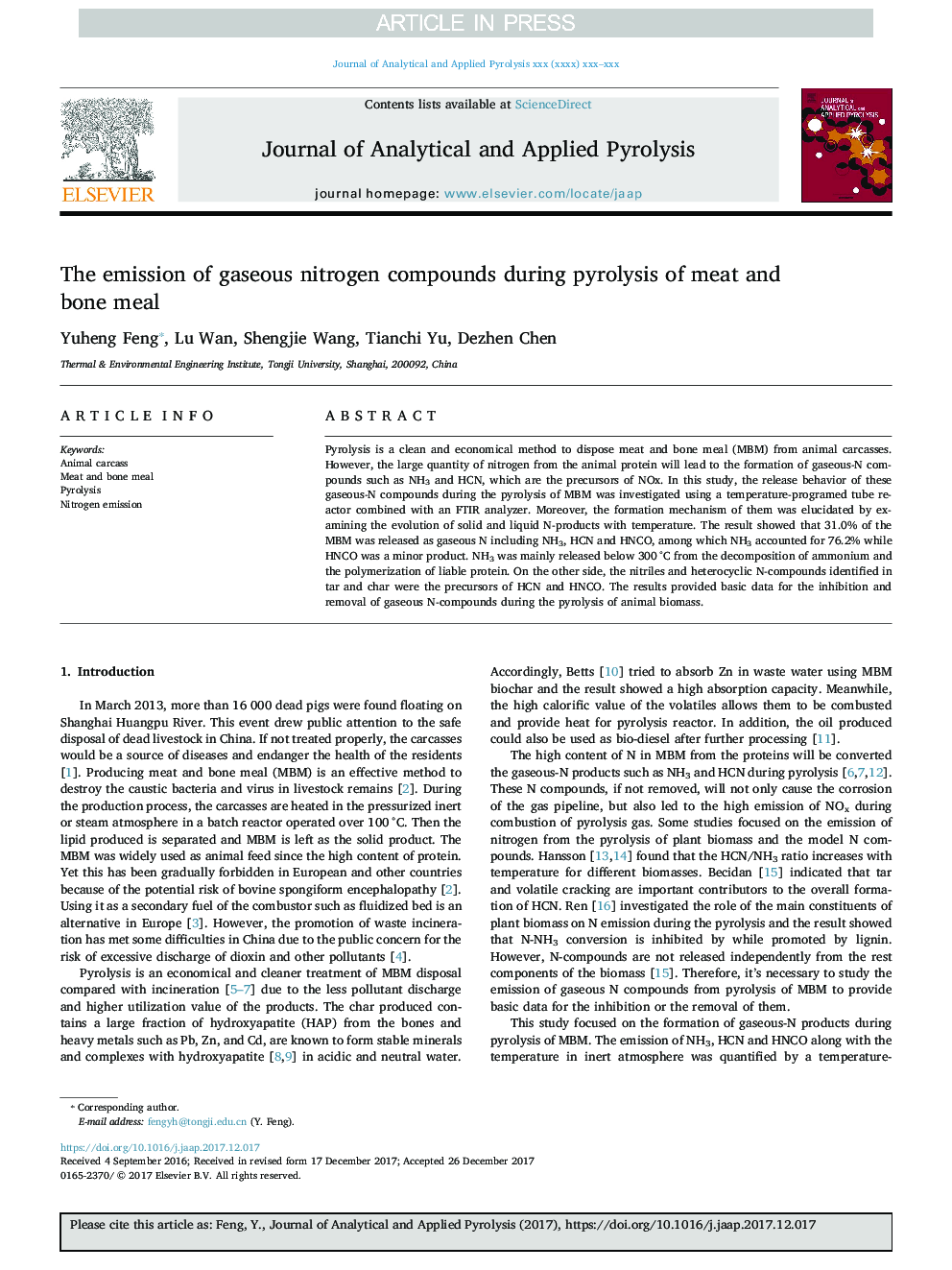| Article ID | Journal | Published Year | Pages | File Type |
|---|---|---|---|---|
| 7606510 | Journal of Analytical and Applied Pyrolysis | 2018 | 6 Pages |
Abstract
Pyrolysis is a clean and economical method to dispose meat and bone meal (MBM) from animal carcasses. However, the large quantity of nitrogen from the animal protein will lead to the formation of gaseous-N compounds such as NH3 and HCN, which are the precursors of NOx. In this study, the release behavior of these gaseous-N compounds during the pyrolysis of MBM was investigated using a temperature-programed tube reactor combined with an FTIR analyzer. Moreover, the formation mechanism of them was elucidated by examining the evolution of solid and liquid N-products with temperature. The result showed that 31.0% of the MBM was released as gaseous N including NH3, HCN and HNCO, among which NH3 accounted for 76.2% while HNCO was a minor product. NH3 was mainly released below 300â¯Â°C from the decomposition of ammonium and the polymerization of liable protein. On the other side, the nitriles and heterocyclic N-compounds identified in tar and char were the precursors of HCN and HNCO. The results provided basic data for the inhibition and removal of gaseous N-compounds during the pyrolysis of animal biomass.
Related Topics
Physical Sciences and Engineering
Chemistry
Analytical Chemistry
Authors
Yuheng Feng, Lu Wan, Shengjie Wang, Tianchi Yu, Dezhen Chen,
